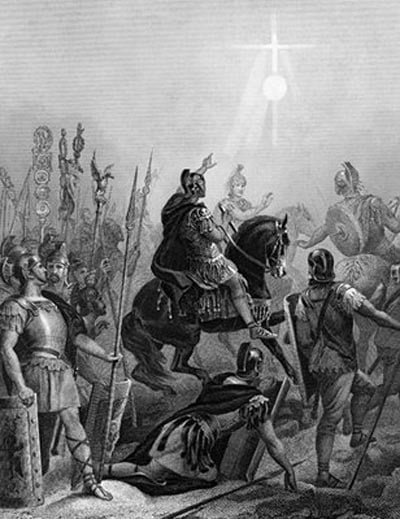
Constantine I “The Great”, Emperor of Rome from 307 to 337 A.D. inherited a troubled empire. Plagued with typical leadership struggles, Rome was also suffering from rebellion, war and increasing weakness. In the conflicts of the tetrarchy, or four emperor system, Constantine was able to maintain a level of neutrality that eventually put him in a position to gain power over the entire empire. But he would have to fight for it. On October 28, 312 A.D. Emperor Constantine met Emperor Maxentius at the Milvian Bridge crossing the Tiber River outside the walls of Rome and fought a battle colored on both sides by the supernatural.
Maxentius had prepared Rome for a lengthy siege, filling it with stores of food and fortifying it to the point that he should have been able to resist Constantine’s attack indefinitely. This tactic had already served him well against two other contenders for the imperial throne. At the last moment, however, following a seemingly good omen that the battle would take place on the anniversary of his accession, Maxentius chose to meet Constantine in open battle. One could say that this stands as a fine example of why one should not pay attention to omens.
Constantine, on the other hand, received something much stronger than an omen. On October 27, the day before the battle, he looked to the sky and saw the chi rho symbol emblazoned in light above the sun along with the words “By this sign, you shall conquer” written in Greek. Later that evening, in a dream, Christ appeared to him and explained that the symbol should be painted on his shields and standards, and with that he would achieve victory. He did as instructed, and victory was his. He continued to use the symbol on the standards of his solders during his battles with yet another emperor, Licinius, until Constantine would eventually become sole Emperor of the Roman Empire. The symbol is still in widespread use today, particularly in Roman Catholicism.

